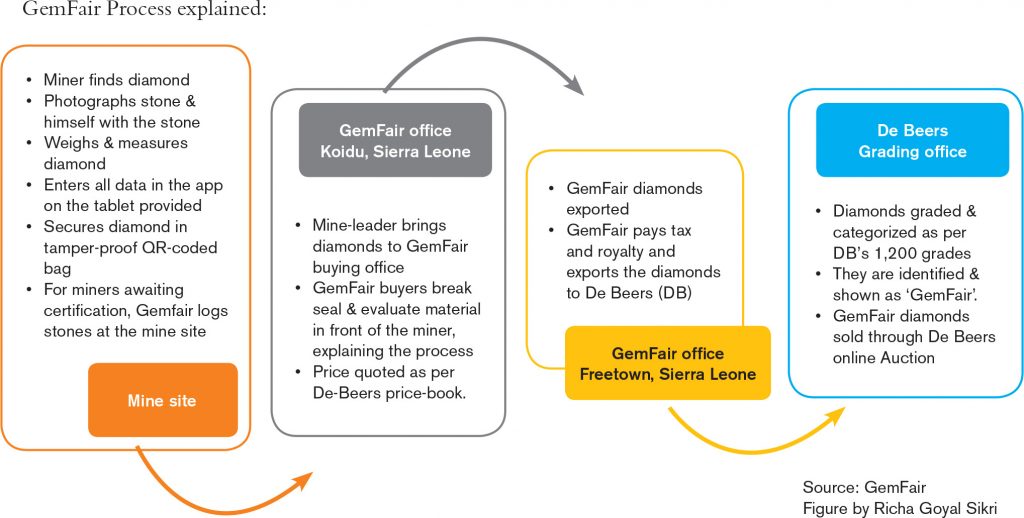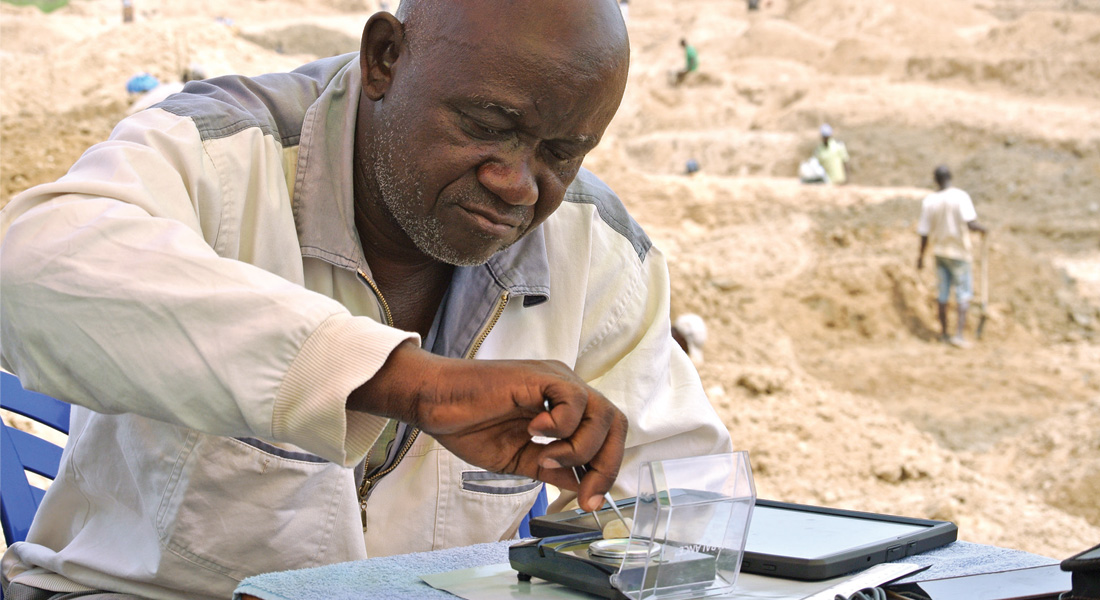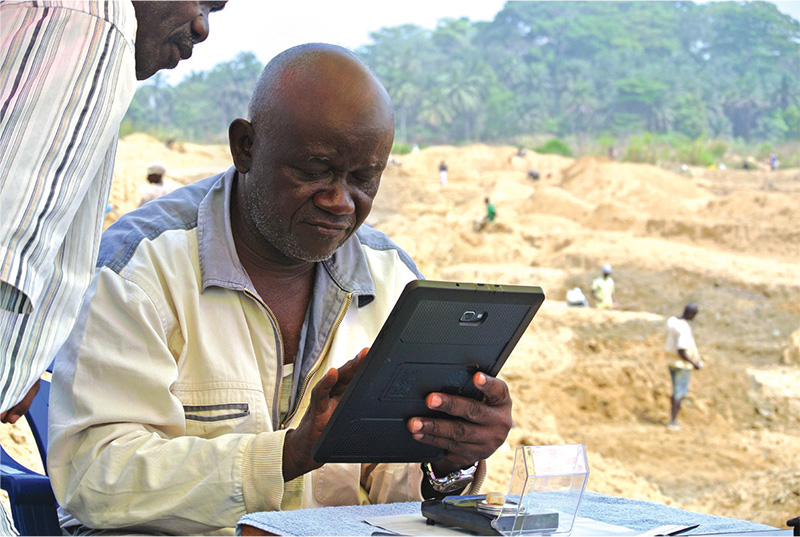Thoughts of natural diamonds typically conjure images of large-scale mining and marketing by companies like De Beers, Alrosa, Rio Tinto, to name a few. Furthermore, largerthan-life announcements by auction houses like Christie’s and Sotheby’s perpetuate the attraction and highlight the financial might of the $82 billion dollar diamond jewellery industry (source: The Economist), of which approximately $14.38 billion dollars is the diamond mining sector (source: De Beers).
There is another side to the sector, however, away from the glitz and glamour. According to Diamond Development Initiative (DDI), nearly 1.5 million people are engaged in artisanal and small-scale diamond mining, also referred to as the ASM sector. With governments, consumers and media focused on transparency, the DDI is leading the march towards formalisation of the ASM sector, along with De Beers, and the Sierra Leone government, through an innovative programme GemFair.
An NGO established in 2005, DDI is registered with the United Nations and focussed on the formalisation of the artisanal and small-scale mining sector (ASM). One example of their work is the Maendeleo Diamond Standards (MDS) and certification process, which supports the legalisation of mining operations, through adherence to requirements of human rights, health and safety, and environmental sustainability.
De Beers notes that approximately, 15% to 20% of all diamonds produced in the world come from the ASM sector, which, given the size of the industry, is an essential contributor to the overall segment. While conversations surrounding the artisanal area may sound romantic, the reality is harsh. Artisanal and small-scale miners have to deal with numerous issues such as access barriers to licences, insufficient knowledge, and lack of training, corruption, inaccessibility to capital for equipment, safety and security. Even if they manage to mine rough diamonds, they struggle to obtain fair market value and an authentic route to the international market.
This brings to light an important question: what is the difference between artisanal miners and illegal miners? In one word, paperwork! Dorothee Gizenga, executive director of DDI, explains, “Exploration is a way of life in Africa and deposits have traditionally been discovered by artisanal miners first. Proximity to the deposit combined with a lack of employment opportunities are usually the building blocks of informal mining. The mindset is of survival and not investment towards a sustainable business. However, informality is not necessarily illegality. In most situations, the road to formalisation is inaccessible either due to financial, bureaucratic or knowledge barriers.”
In 2018, De Beers in collaboration with DDI initiated a pilot project called GemFair. The objective was to offer a route to market for diamonds mined by artisanal and small-scale miners. GemFair purchases from miners who can either work with DDI’s MDS standard programme or with the GemFair Responsible ASM Assurance Programme. The GemFair ASM Standard draws its structure, scope and intent from the OECD’s ‘Due Diligence Guidance for Responsible Supply Chains from Conflict-Affected and High-Risk areas, De Beers Group’s Best Practice Principles Assurance Programme, the Alliance for Responsible Mining, and RESOLVE’s draft code.
De Beers established two offices, in Freetown and Koidu, Sierra Leone, with a team of two buyers and 15 other staff. GemFair provides every certified miner with a toolkit (free of charge) comprising a tablet, loupe, weighing scales, and QR-coded tamper-proof bags linked to that particular mine. If the miner is awaiting certification, upon being contacted, the GemFair team will visit the mine site and log the stones for the miner.

Now the critical question: how does ‘GemFair’ ensure diamonds brought to them, are actually from the certified mine? “To understand the risk, it is important to understand the ecosystem at the site. Typically there is a landowner who is also sometimes the licenceholder, a site manager who hires diggers and then someone in a supervisory/support role liaising with the GemFair team. When any diamond is found, the profits from that stone are shared among all stakeholders. Now, if someone were to bring a diamond from another location to the mine, they would have to split the profits with everyone at the site, which is not an economically attractive proposition. Even if they get a lower value for the ‘alien diamond’, they would prefer to sell it informally and retain 100% of the profits than to collude with the ten-odd diggers, the site manager, etc. We additionally supervise the sites through our field officers and in case of any issue, the site would immediately be flagged, and trading suspended pending an investigation. This is something that the stakeholders don’t want to risk,” notes Feriel Zerouki, senior vice president of international relations and ethical initiatives.
In an environment where endless debates, conferences, and arguments surround the topic of responsible sourcing, it is refreshing to see bold steps taken, to create an actual mechanism, for delivery of a transparent route to market, for the primarily neglected ASM sector. On its own, each approach, whether digital or relationship-driven, cannot guarantee results, which is why GemFair’s solution employs multiple methods to track the source of every single diamond. One example is cross-referencing the GPS coordinates contained in the licence of the GemFair mine, with GPS tracking embedded in the toolkit provided to the miner. In addition to technology, the GemFair field team works hard to cross-verify all the technical data with personal audits.
Is the solution perfect? Probably not, but it is a gigantic and courageous step in the right direction, which, hopefully, encourages others in the sector to pause and reflect, before they rush to dismiss and return to their routine.



